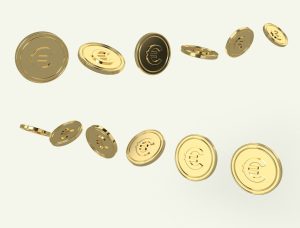Forex charts are an essential tool for traders to analyze and interpret the market movements of currency pairs. These charts provide a visual representation of price movements over time, and can help traders identify trends, patterns, and potential trading opportunities. Printing forex charts can be useful for traders who want to have a hard copy of their analysis or for those who prefer to study charts away from their computer screens. In this article, we will explain how to print forex charts step-by-step.
Step 1: Choose the Forex Chart You Want to Print
The first step in printing a forex chart is to choose the chart you want to print. Most trading platforms offer a variety of charting options, including line charts, bar charts, and candlestick charts. You can select the chart type that is most appropriate for your analysis. Additionally, you can customize your chart by adding indicators, drawing tools, or other features that can help you analyze the market more effectively.
Step 2: Adjust the Chart Size
Once you have selected the chart you want to print, you will need to adjust the chart size to fit the page. Most trading platforms allow you to resize the chart by dragging the edges of the chart window. You can also adjust the chart size by selecting the “print preview” option, which will show you how the chart will look when printed.
Step 3: Check the Print Settings
Before printing the forex chart, you should check the print settings to ensure that the chart will print correctly. This includes selecting the printer, paper size, and orientation. You should also check the margins and scaling options to ensure that the chart will fit on the page.
Step 4: Print the Chart
Once you have adjusted the chart size and checked the print settings, you can print the forex chart. To do this, simply click on the “print” button or select the “print” option from the file menu. The chart will be sent to the printer and will be printed on the selected paper size and orientation.
Tips for Printing Forex Charts
– Use high-quality paper: When printing forex charts, it is important to use high-quality paper to ensure that the chart is clear and easy to read. Glossy paper can be a good option as it enhances the colors and details of the chart.
– Save ink: Forex charts can be intricate and contain a lot of detail, which can use up a lot of ink. To save ink, you can select the “black and white” option when printing, or adjust the printer settings to use less ink.
– Print in landscape orientation: Most forex charts are wider than they are tall, so it is often better to print them in landscape orientation to fit more of the chart on the page.
Conclusion
Printing forex charts can be a useful tool for traders who want to have a hard copy of their analysis or prefer to study charts away from their computer screens. By following the steps outlined in this article, traders can print high-quality forex charts that are easy to read and analyze. Remember to choose the right chart, adjust the size, check the print settings, and use high-quality paper to get the best results.






